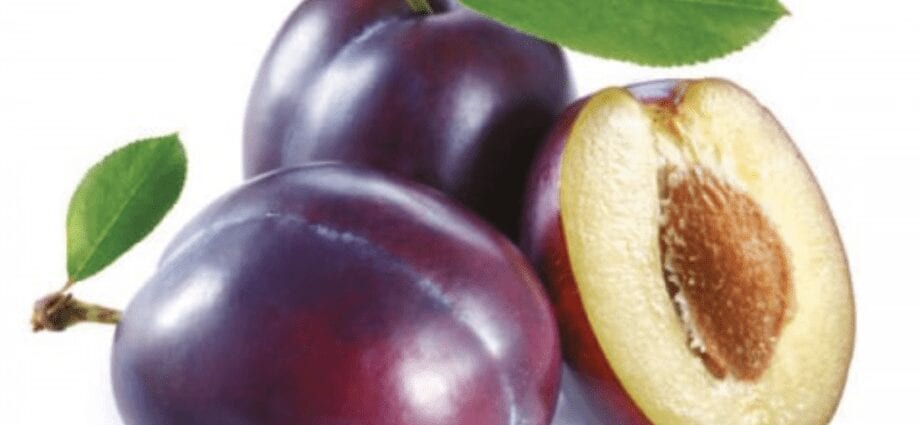Contents
Description of plum
Plum is a tree of almond subfamily. Grows up to 5 meters high. Plum has simple leaves, lanceolate, framed by pikes, and pink or white flowers with five petals, collected in umbrellas of five to six inflorescences, or single.
Incredibly, the plum itself was not cultivated from a wild plant. Three millennia ago, in the Caucasus, cherry plum hybridized in a natural way with thorns, and people immediately began to build a new culture.
Her Majesty the Plum got to Europe and Asia only after many centuries, although it took root there almost instantly. Today, plums are grown in Africa, America and even Australia.
Domestic plum (Prunus domestica) is a deciduous tree, which is a fruit stone fruit crop.
There are 4 types of plum varieties according to the fruiting rate:
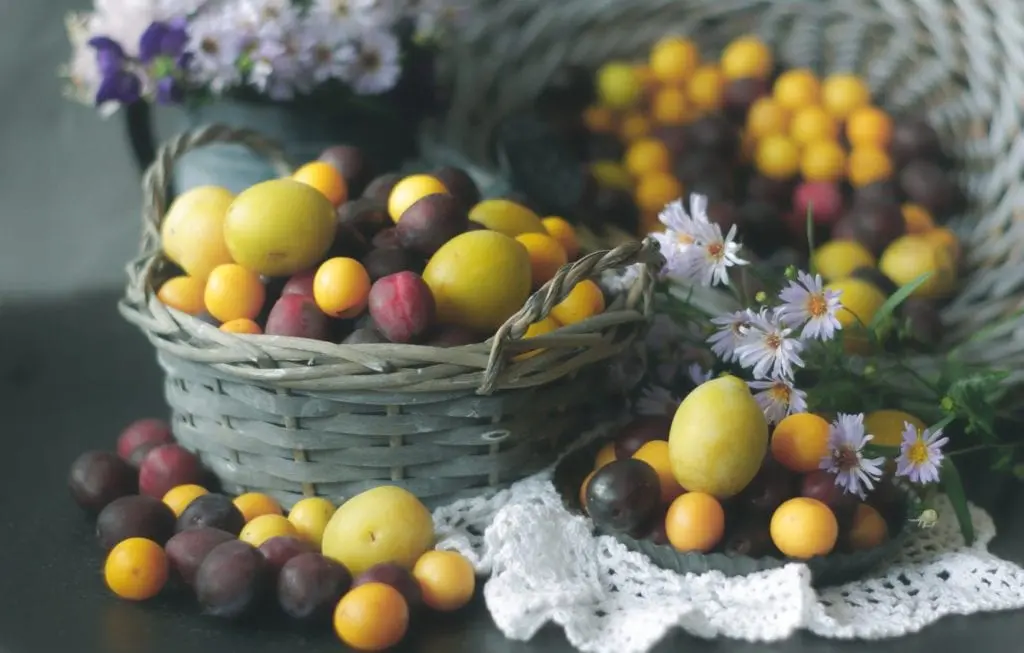
- Very early-growing varieties – the plum begins to bear fruit 2-3 years after planting.
- Early-growing varieties – fruiting begins 3-4 years after planting.
- Medium-sized varieties – fruiting begins at 5-6 years.
- Late fruiting – the tree begins to bear fruit in the 7th year or later.
Plum begins to bloom in the middle lane from 1 to 3 ten days of May, flowering lasts from a week to 12 days and often falls on the period of spring cooling. On average, one tree produces 15-20 kg of plums.
Plum bears fruit in August – October. The plum fruit is a round, oval, spherical or elongated juicy drupe with a lateral groove of yellow, pale green, purple, dark blue or red.
Composition and calorie content
Plums contain glucose, fructose and sucrose, vitamins A, B1, B2, C, H and PP, as well as essential minerals: potassium, calcium, magnesium, zinc, copper and manganese, iron, chromium, boron and nickel, phosphorus and sodium.
- Calorie content 49 kcal
- Proteins 0.8 g
- Fat 0.3 g
- Carbohydrates 9.6 g
The benefits of plums
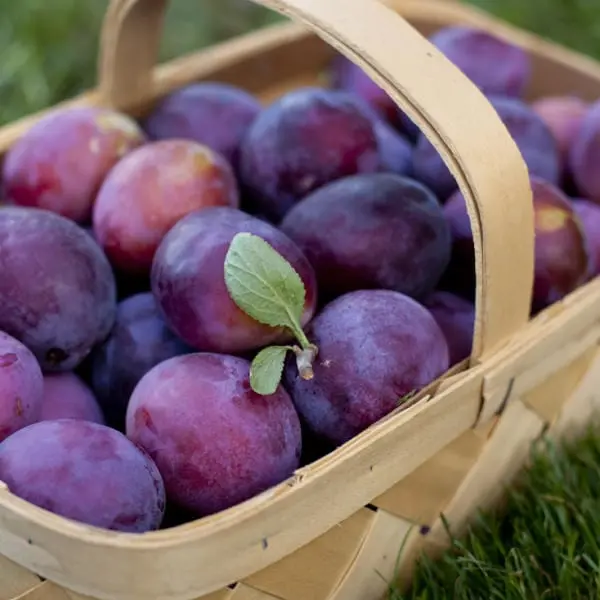
The first is, of course, the unique juicy taste of plums. Thousands of various dishes, drinks, sauces are prepared from it. What can we say about prunes, which in itself is an excellent dessert and a storehouse of vitamins.
Plum is an excellent honey plant – bees collect almost 50 kg of fragrant honey from just 1 ha of plum garden.
A few words about the beneficial substances contained in the plum. It contains up to 18% sugars (fructose, glucose and sucrose). Plum is rich in vitamins A, C, P and B1, B2, as well as potassium, phosphorus, calcium, magnesium, iron, boron, manganese, zinc, nickel, copper and chromium. Plum contains amino acids and flavonoids.
Plum seeds are used to produce oil, which in its properties is equal to almond oil, and in the plum fruits the so-called coumarins, which have the property of preventing the formation of blood clots and promoting vasodilation, are kept in check.
Due to its properties, plum increases appetite, has a diuretic and laxative effect, and helps to improve digestion. Plum drinks (compotes and jelly) are used to treat kidney disease, gout, rheumatism and atherosclerosis. Doctors recommend using plums for anemia and cardiovascular diseases.
Harm
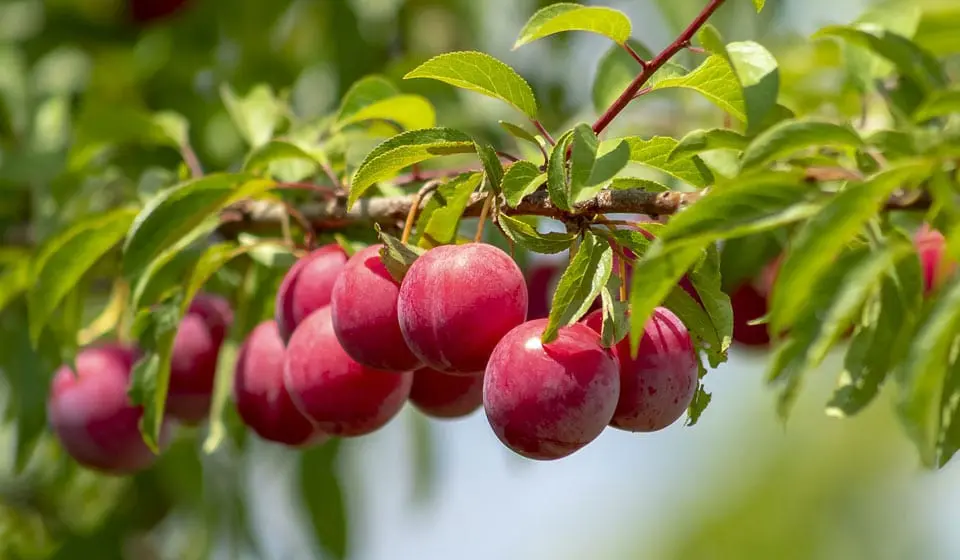
Excessive consumption of plums can lead to indigestion. Since the fruits contain sugar, they should be eaten with caution and, after consulting a doctor, for people suffering from diabetes.
Application of fruits and leaves of plum to medicine
Plum fruits have a laxative effect, therefore they have long been used in folk medicine in the treatment of prolonged constipation. It should be noted that the laxative properties of the plum are not lost when the fruit is dried (dried).
During the ripening period, it is rational to use plums fresh, eating several pieces during the day. For treatment in winter, “prunes” are used. Remedy for constipation is quite simple to prepare – just chop the fruits, remove the seeds and pour boiling water; in a quarter of an hour, the infusion is ready for use. For the treatment of chronic, so-called, persistent constipation, it is better to cook oat-plum jelly.
Plum blossom
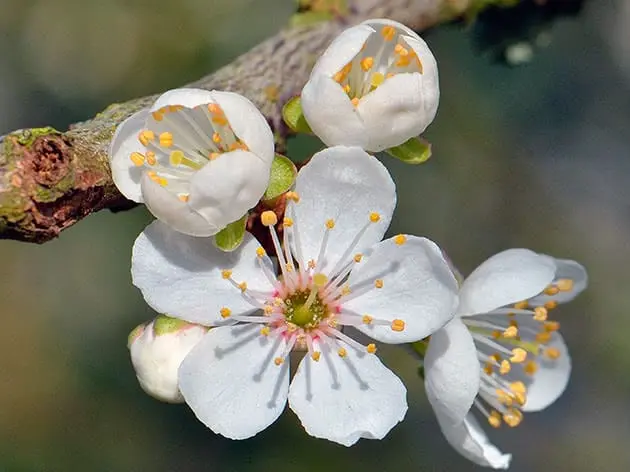
Plum leaves have bactericidal properties, so they can be used to prepare a decoction used in the treatment of stomatitis and other diseases of the gums and mouth. The broth is prepared in a ratio of 1:10, that is, 20 g of dry leaves are required for a glass of water. Bring the liquid to a boil and boil for 10 – 15 minutes. Strain the decoction of the leaves and use as a mouth rinse.
Taste qualities of plum
Plums have a wide range of flavors ranging from sweet to tart. Most varieties have juicy sweet fruits, some have sourness, honey, spice, almond, peach and other flavors.
In ripe fruit, the stone separates well from the pulp. Wild varieties of the plant have a very tart taste, so they are practically not used.
Cherry plum is also distinguished by its excellent taste. Its fruits, depending on the variety, are sweet or slightly sour.
Cooking applications
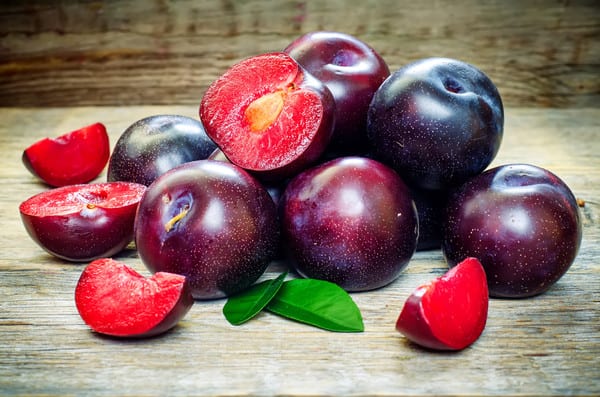
In cooking, plum fruits are used to prepare many dishes. They are an ingredient in preserves, jams, marinades, compotes. Fruits are included in cheese, pies, and many desserts. The fruits are harvested for the winter, pickled, salted, frozen and dried. An unusual snack, served with ice, is dried salted plums. The compote made from cherry plum has excellent taste.
A traditional Japanese dish is umeboshi – salted plums. They are added to many dishes, including rice “balls”, the fruits give a special sour taste. In the Caucasus, Georgian tkemali sauce and tklapi puree are national dishes. The first dish is served with meat dishes; the main ingredient is tkemali plum. Herbs and garlic are also added to the sauce.
Tklapi are sun-dried plates obtained from tkemali, which is pre-diluted with broth. It is an important component of kharcho soup, pie filling and seasoning. A sauce similar to tkemali is also prepared in Bulgaria.
An excellent table wine with an original bouquet is obtained from the plum. It goes well with meat dishes and is able to compete with grape counterparts.
When preparing plum dishes, it is recommended to adhere to the following rules:
- Pickled fruits go well with meat dishes and poultry, they are put in pilaf. Both ripe and unripe fruits are suitable for preparing the marinade.
- The jam is made from fruits of the same ripeness. The plum must be blanched before placing it in a jar.
- For the preparation of compote it is recommended to use large plums with small stones.
- To keep the fruits in shape during cooking, they are pierced several times with a toothpick.
- A piquant aftertaste is obtained by adding spices to plum blanks – nutmeg, vanilla, cloves, cinnamon.
- Fruit pits are usually removed, but they may also be present in dishes.
It is important to remember that pitted plum preparations cannot be stored for a long time!










